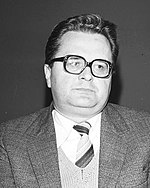Polish legislative election, 1989
|
|
|||||||||||||||||||||||||||||||||||||||||||||||||||||||||||||||||||||||||||||
|---|---|---|---|---|---|---|---|---|---|---|---|---|---|---|---|---|---|---|---|---|---|---|---|---|---|---|---|---|---|---|---|---|---|---|---|---|---|---|---|---|---|---|---|---|---|---|---|---|---|---|---|---|---|---|---|---|---|---|---|---|---|---|---|---|---|---|---|---|---|---|---|---|---|---|---|---|---|
|
|||||||||||||||||||||||||||||||||||||||||||||||||||||||||||||||||||||||||||||
|
All 460 seats in the Sejm |
|||||||||||||||||||||||||||||||||||||||||||||||||||||||||||||||||||||||||||||
| Turnout | 62.7% (First round) 25% (Second round) |
||||||||||||||||||||||||||||||||||||||||||||||||||||||||||||||||||||||||||||
|
|||||||||||||||||||||||||||||||||||||||||||||||||||||||||||||||||||||||||||||
The Polish legislative election of 1989 was the tenth election to the Sejm, the parliament of the Polish People's Republic, and the first election to the recreated Senate of Poland. The first round took place on 4 June, right after the 1989 June 4th Beijing Tiananmen Square massacre in China, with a second round on 18 June. It was the closest thing to a free election in the country since 1928, and the first since the communist Polish United Workers Party abandoned its monopoly of power in April.
Not all parliamentary seats were contested, but the resounding victory of the Solidarity opposition in the freely contested races paved the way to the fall of Communism in Poland. Solidarity swept all of the freely contested seats in the Sejm, and all but one seat in the entirely freely-contested Senate. In the election's aftermath, Poland became the first country of the Eastern Bloc in which democratically elected representatives gained real power. Although the elections were not entirely democratic, they paved the way for creation of Tadeusz Mazowiecki's cabinet and a peaceful transition to democracy in Poland and elsewhere in Central and Eastern Europe, which was confirmed after the Polish parliamentary elections of 1991.
In May and August 1988 massive waves of workers' strikes broke out in the Polish People's Republic. The strikes, as well as street demonstrations, continued throughout spring and summer, ending in early September 1988. These actions shook the communist regime of the country to such an extent, that it was forced to begin talking about recognising Solidarity (Polish: Solidarność) an "unofficial" labor union that subsequently grew into a political movement. As a result, later that year, the regime decided to negotiate with the opposition, which opened way for the 1989 Round Table Agreement.The second, much bigger wave of strikes (August 1988) surprised both the government, and top leaders of Solidarity, who were not expecting actions of such intensity. These strikes were mostly organized by local activists, who had no idea that their leaders from Warsaw had already started secret negotiations with the communists.
...
Wikipedia





